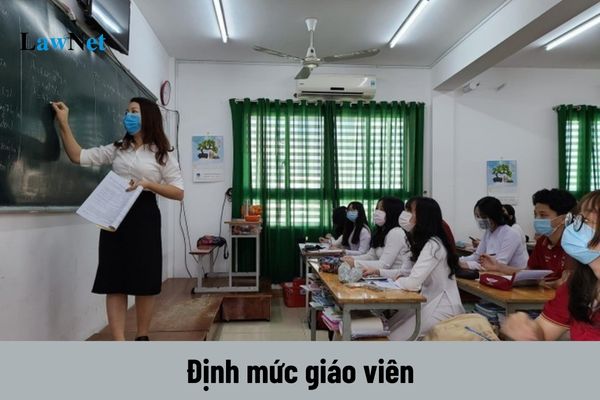Vietnam: What are the regulations on zoning to determine teacher norms?
What are the regulations on zoning to determine teacher norms in Vietnam?
According to Article 3 of Circular 20/2023/TT-BGDDT, the regulations on zoning to determine teacher norms in Vietnam are as follows:
- Zone 1: Communes in areas 2 and 3 according to current regulations within ethnic minority and mountainous areas; especially difficult coastal sandbar communes; particularly disadvantaged communities; island communes, sea islands, border communes, safety zone communes as regulated by the Government of Vietnam;
- Zone 2: Communes in area 1 (excluding wards and towns) according to current regulations within ethnic minority and mountainous areas;
- Zone 3: Wards and towns in area 1 according to current regulations within ethnic minority and mountainous areas and the remaining communes, wards, and towns.
In addition, the number of students per class by Zone to serve as a basis for assigning or approving the number of staff in general education institutions are as follows:
- In Zone 1: The teacher norm is an average of 25 students per class for primary level; an average of 35 students per class for lower secondary and upper secondary levels;
- In Zone 2: The teacher norm is an average of 30 students per class for primary level; an average of 40 students per class for lower secondary and upper secondary levels;
- In Zone 3: The teacher norm is an average of 35 students per class for primary level; an average of 45 students per class for lower secondary and upper secondary levels;
- The number of students per class in boarding ethnic secondary schools and specialized upper secondary schools shall comply with the organizational and operational regulations.
Note: The number of students per class is determined specifically for each educational institution, not administrative divisions at the commune, district, or provincial level.

What are the regulations on zoning to determine teacher norms in Vietnam? (Image from the Internet)
How many lessons must teachers in Vietnam teach per week?
According to Article 6 of the Regulations on working policies for general education teachers issued with Circular 28/2009/TT-BGDDT (amended by Clause 5, Article 1 of Circular 15/2017/TT-BGDDT), teaching lesson norms for teachers as follows:
The teaching lesson norm is the number of theoretical or practical lessons that each teacher must teach in a week. To be specific:
- The norm for primary school teachers is 23 lessons; lower secondary school teachers is 19 lessons; upper secondary school teachers is 17 lessons;
- The norm for teachers in boarding ethnic secondary schools is 17 lessons at the lower secondary level, 15 lessons at the upper secondary level;
- The norm for teachers in semi-boarding ethnic secondary schools is 21 lessons at the primary level, 17 lessons at the lower secondary level;
- The norm for teachers in schools or classes for the disabled and handicapped is 21 lessons for primary school teachers, and 17 lessons for lower secondary school teachers.
- The norm for teachers in pre-university schools is 12 lessons;
- Teachers who are the leaders of the Ho Chi Minh Young Pioneer Organization at level 1 schools teach 2 lessons per week, level 2 schools teach 1/3 of the norm, and level 3 schools teach 1/2 of the norm of teachers of the same educational level. The ranking of secondary schools follows current regulations.
What is the current salary coefficient for teachers in Vietnam?
According to the guidance in 04 Circulars of the Ministry of Education and Training including Circular 01/2021/TT-BGDDT, Circular 02/2021/TT-BGDDT, Circular 03/2021/TT-BGDDT, Circular 04/2021/TT-BGDDT and amended by Circular 08/2023/TT-BGDDT, the current salary coefficient for teachers at various education levels is as follows:
| Teacher | Salary Coefficient |
| Preschool Teacher | - Preschool teacher grade 3, code V.07.02.26, applies the salary coefficient of public employees category A0, from salary coefficient 2.10 to salary coefficient 4.89; - Preschool teacher grade 2, code V.07.02.25, applies the salary coefficient of public employees category A1, from salary coefficient 2.34 to salary coefficient 4.98; - Preschool teacher grade 1, code V.07.02.24, applies the salary coefficient of public employees category A2, group A2.2, from salary coefficient 4.0 to salary coefficient 6.38. |
| Primary Teacher | - Primary teacher grade 3, code V.07.03.29, applies the salary coefficient of public employees category A1, from salary coefficient 2.34 to salary coefficient 4.98; - Primary teacher grade 2, code V.07.03.28, applies the salary coefficient of public employees category A2, group A2.2, from salary coefficient 4.00 to salary coefficient 6.38; - Primary teacher grade 1, code V.07.03.27, applies the salary coefficient of public employees category A2, group A2.1, from salary coefficient 4.40 to salary coefficient 6.78. |
| Lower Secondary Teacher | - Lower secondary teacher grade 3, code V.07.04.32, applies the salary coefficient of public employees category A1, from salary coefficient 2.34 to salary coefficient 4.98; - Lower secondary teacher grade 2, code V.07.04.31, applies the salary coefficient of public employees category A2, group A2.2, from salary coefficient 4.00 to salary coefficient 6.38; - Lower secondary teacher grade 1, code V.07.04.30, applies the salary coefficient of public employees category A2, group A2.1, from salary coefficient 4.4 to salary coefficient 6.78. |
| Upper Secondary Teacher | - Upper secondary teacher grade 3, code V.07.05.15, applies the salary coefficient of public employees category A1, from salary coefficient 2.34 to salary coefficient 4.98; - Upper secondary teacher grade 2, code V.07.05.14, applies the salary coefficient of public employees category A2, group A2.2, from salary coefficient 4.0 to salary coefficient 6.38; - Upper secondary teacher grade 1, code V.07.05.13, applies the salary coefficient of public employees category A2, group A2.1, from salary coefficient 4.40 to salary coefficient 6.78. |
>> See detailed salary coefficients for teachers at various education levels here.
Note: The above regulations only apply to teachers working in public general education institutions.

